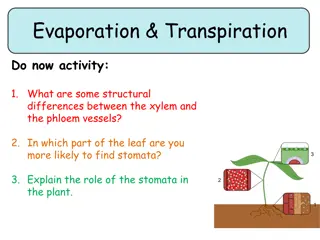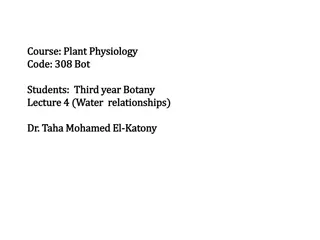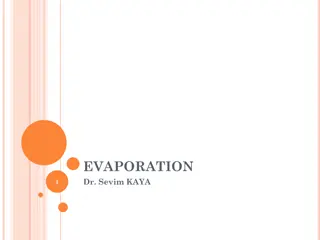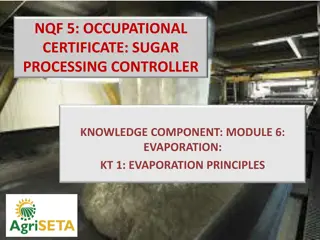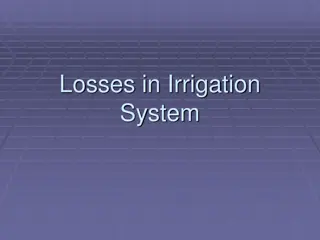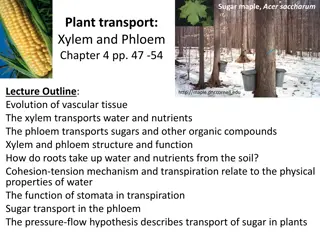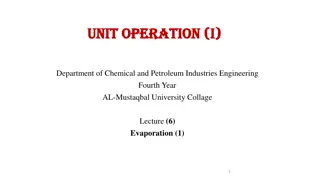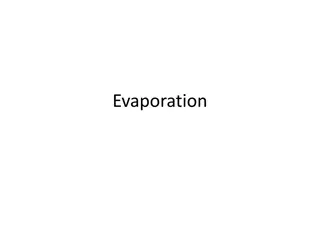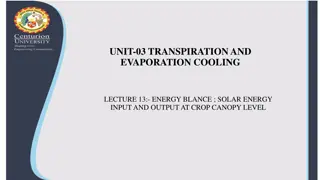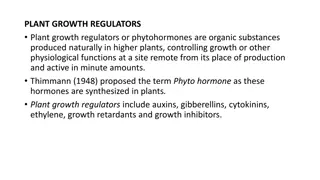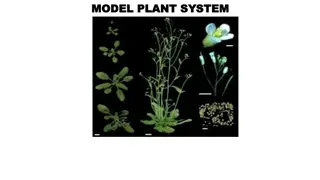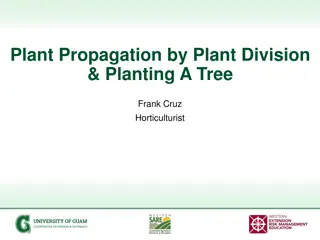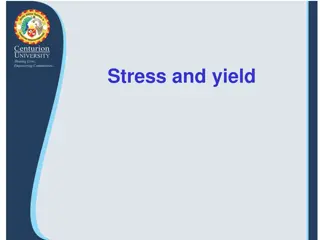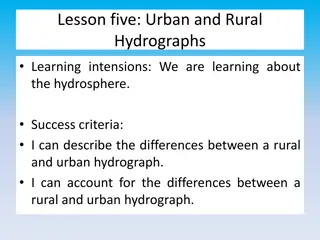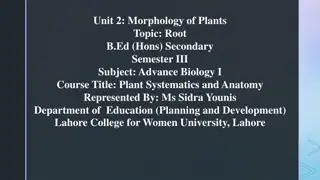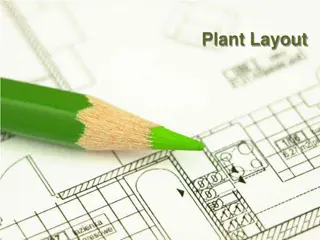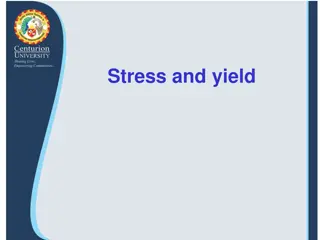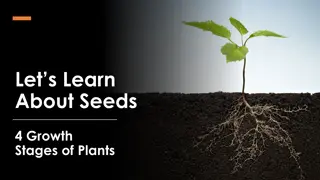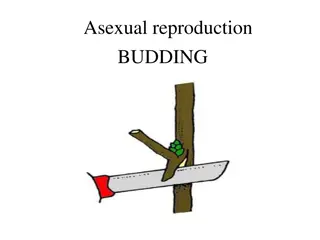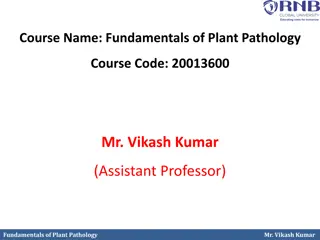Understanding Plant Evaporation and Transpiration Processes
Learn about the structural differences between xylem and phloem vessels, the role of stomata in plant leaves, and how water loss occurs through transpiration. Discover how guard cells regulate stomata openings and watch a video explaining transpiration processes in plants. Test your knowledge with self-assessment questions on root hair cells, water movement in plants, environmental factors affecting transpiration rates, and guard cell behavior.
Download Presentation

Please find below an Image/Link to download the presentation.
The content on the website is provided AS IS for your information and personal use only. It may not be sold, licensed, or shared on other websites without obtaining consent from the author. Download presentation by click this link. If you encounter any issues during the download, it is possible that the publisher has removed the file from their server.
E N D
Presentation Transcript
Evaporation & Transpiration Do now activity: 1. What are some structural differences between the xylem and the phloem vessels? 2. In which part of the leaf are you more likely to find stomata? 3. Explain the role of the stomata in the plant.
Progress indicators GOOD PROGRESS: Identify the structure of the guard cells and stomata Describe the process of transpiration in a plant OUTSTANDING PROGRESS: Apply new learning to level 3 exam questions
Guard cells & stomata All over the leaf surface are small openings called stomata. The stomata can be opened when the plant needs to allow air into the leaves. The size of the opening is controlled by the guard cells. This in turn controls the carbon dioxide going into the leaf and the oxygen and water vapour leaving it.
Water loss from the leaves When the stomata are open, plants lose water vapour through them as well. The water vapour evaporates from the cells lining the air spaces and then passes out of the leaf through the stomata by diffusion. This loss of water vapour is known as transpiration.
Task: Watch the video and answer the following questions: 1. What is transpiration? 2. What is an adaptation of root hair cells? 3. How is water pulled up through the plant? 4. Why is water needed by the plant? 5. What are some environmental factors that affect the rate of transpiration? 6. Explain what happens to the guard cells in order to make the stomata: a) Open b) Closed https://www.youtube.com/watch?v=Kv_0udatlh8
Self-assessment: 1. Transpiration is the evaporation of the water from the aerial parts of a plant leaves & stem 2. An adaptation of a root hair cell is that it has a large surface area so more water can be absorbed. 3. Evaporation of water from the surface of the leaf causes a transpiration pull, this moves water into the roots, up through the stem and into the leaves. Water is cohesive (sticks together) so this results in a transpiration stream 4. Water is needed for photosynthesis and to keep the plant cells turgid this supports the plant. 5. Environmental factors affecting the rate of transpiration are: light intensity, temperature, wind, humidity. 6. a) When water is taken into the guard cells by osmosis this results in turgidity of the guard cells, as they fill and bend this opens the stomata b) When water leaves the guard cells the guard cells become flaccid, this closes the stomata.
Describing transpiration 1. Water is lost from the leaf by evaporation, through open stomata 2. Water moves up through the stem and into the leaves to replace water lost by evaporation 3. Water moves into the roots from the soil by osmosis this replaces the water moving up the stem
Task: Write a short passage explaining how water moves through a plant during the process of transpiration. Try and use as many of the key words below as possible and use the diagram to help you! leaves evaporation water diffusion stomata transpiration stem roots cohesion xylem
9 marks = 9 minutes Task: Exams question practice
Self-assessment: Q1. (a) (i) guard (cells) allow phonetic spelling 1 (ii) ignore reference to cells any one from: allow carbon dioxide to enter allow control loss / evaporation of water or control transpiration rate allow oxygen to leave. allow gaseous exchange 1 (b) correct answer gains 2 marks with or without working allow 1 mark for 0.1 0.1 = 0.01 (mm2) (i) 200 2 (ii) allow plant more likely to wilt (in hot / dry conditions) more / a lot of / increased water loss 1
Self-assessment: (ii) allow plant more likely to wilt (in hot / dry conditions) more / a lot of / increased water loss 1 (c) (i) 0.12 1 (ii) the lower surface has most stomata 1 stomata are now covered / blocked (by grease) 1 so water cannot escape / evaporate from the stomata ignore waterproof to gain credit stomata must be mentioned at least once 1 [9]




